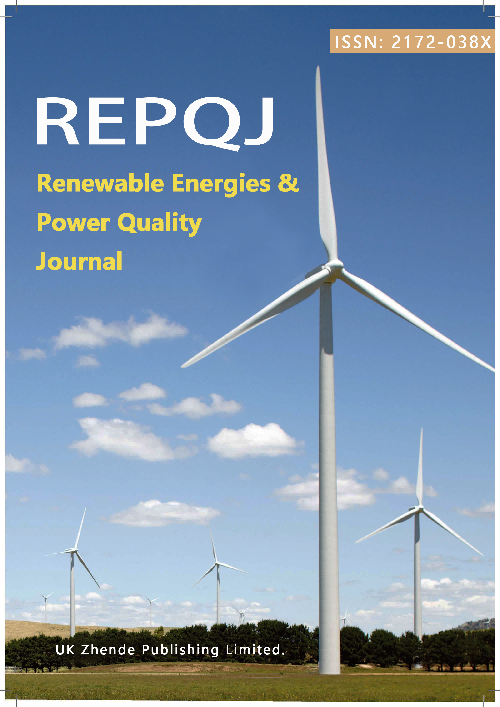Stability Analysis Based on Hybrid αβ-impedance Model of Grid-Connected Inverters under Weak Grid
DOI:
https://doi.org/10.52152/4092Keywords:
Grid-connected Inverter (GCI), Hybrid Impedance Model, Weak Grid, Stability MarginAbstract
The robustness of the grid-connected inverter (GCI) system in weak grids is deteriorated due to consider discrete characteristics of the GCI control system. Under the same main circuit parameters and control loop parameters, the small signal models of the GCI controlled with continuous-impedance model and hybrid-impedance model are constructed, respectively. Compared with the small-signal hybrid impedance model of the GCI controlled indomain, the number of control loops of GCI controlled indomain is one less. Moreover, the rationale behind the enhanced stability of the GCI system governed by a hybrid-impedance control scheme, as compared to one based on hybrid-impedance control, is examined and elucidated. This lays a theoretical underpinning for the analysis and development of a discretized control loop to enhance the stability of the GCI under weak grid. Finally, the theoretical analysis is confirmed through simulation and experimental validations.
References
X.Wang, K. Qin, X. Ruan, D. Pan, Y. He, and F. Liu, “A robust grid-voltage feedforward scheme to improve adaptability of grid-connected inverter to weak grid condition,” IEEE Trans. Power. Electron, vol. 36, no. 2, pp. 2384–2395, Feb. 2021, DOI: 10.1109/TPEL.2020.3008218.
F. Chishti, S. Murshid, and B. Singh, “Weak grid intertie WEGS with hybrid generalized integrator for power quality improvement,” IEEE Trans. Ind. Electron., vol. 67, no. 2, pp. 1113–1123, Feb. 2020, DOI: 10.1109/TIE.2019.2898598.
X. Wang and F. Blaabjerg, “Harmonic stability in power electronic-based power systems: Concept, modeling, and analysis,” IEEE Trans. Smart Grid, vol. 10, no. 3, pp. 2858–2870, Mar. 2019, DOI: 10.1109/TSG.2018.2812712.
X. Zhang, S. Fu, W. Chen, N. Zhao, G. Wang, and D. Xu, “A symmetrical control method for grid-connected converters to suppress the frequency coupling under weak grid conditions,” IEEE Trans. Power Electron., vol. 35, no. 12, pp. 13488–13499, Dec. 2020, DOI: 10.1109/TPEL.2020.2991185.
Z. Lin, X. Ruan, L. Wu, H. Zhang, and W. Li, “Multi resonant component based grid-voltage-weighted feedforward scheme for grid-connected inverter to suppress the injected grid current harmonics under weak grid,” IEEE Trans. Ind. Electron, vol. 35, no. 9, pp. 9784–9793, Sept. 2020, DOI: 10.1109/TPEL.2020.2970514.
Z. Zeng, J. Zhao, Z. Liu, L. Mao, K. Qu, Stability assessment and parametric sensitivity analysis based on extended Gershgorin theorem for multiple grid connected converters, Electr. Power Syst. Res., vol. 214, 108913, Jan. 2023, DOI:10.1016/j.epsr.2022.108913.
Wen Bo, Boroyevich D, Burgos R, et al, “Analysis of D-Q small-signal impedance of grid-tied inverters,” IEEE Trans. Power. Electron., vol. 31, no. 1, pp. 675–687, Jan. 2016, DOI: 10.1109/TPEL.2015.2398192.
CESPEDES M, SUN Jian, “Impedance modeling and analysis of grid-connected voltage-source converters,” IEEE Trans. Power. Electron., vol. 29, no. 3, pp. 1254–1261, Mar. 2014, DOI: 10.1109/TPEL.2013.2262473.
Huang Linbin, Xin Huanhai, Li Zhiyi, Ju Ping, Yuan Hui, Lan Zhou, Wang Zhen, “Grid-synchronization stability analysis and loop shaping for PLL-based power converters with different reactive power control,” IEEE Trans Smart Grid., vol. 11, no. 1, pp. 501–516, Jan. 2020, DOI: 10.1109/TSG.2019.2924295.
C. M. Tu, J. Y. Gao, F. Xiao et al., “Stability Analysis of the Grid-Connected Inverter Considering the Asymmetric Positive-Feedback Loops Introduced by the PLL in Weak Grids,” IEEE Trans. Ind. Electron., vol. 69, no. 6, pp. 5793-5802, Jan. 2022, DOI: 10.1109/TIE.2021.3086716.
B. Shi, Z. Zhao, Y. Zhu, Z. Yu, J. Ju, “A numerical convex lens for the state discretized modeling and simulation of megawatt power electronics systems as generalized hybrid systems,” Engineering, vol. 7, no. 12, pp. 1766–1777, Dec. 2021, DOI:10.1016/j.eng.2021.07.011.
Pirsto Ville, Kukkola Jarno, Hinkkanen Marko, Harnefors Lennart, “Intersample modeling of the converter output admittance,” IEEE Trans. Ind. Electron., vol. 68, no. 11, pp. 11348-11358, Nov. 2021, DOI: 10.1109/TIE.2020.3029482.
Y. J. Zhu, J. B. Zhao, Z. W. Zeng et al., “SISO impedance modeling and stability comparison of grid-connected inverter control system in different time domains,” Electric Power Systems Research, vol. 228, Mar. 2024, DOI:10.1016/j.epsr.2023.110069.
Downloads
Published
Issue
Section
License
Copyright (c) 2025 Jun Gu, Tianle Li, Jing Shen, Hao Ma, Meiying Yang (Author)

This work is licensed under a Creative Commons Attribution 4.0 International License.











